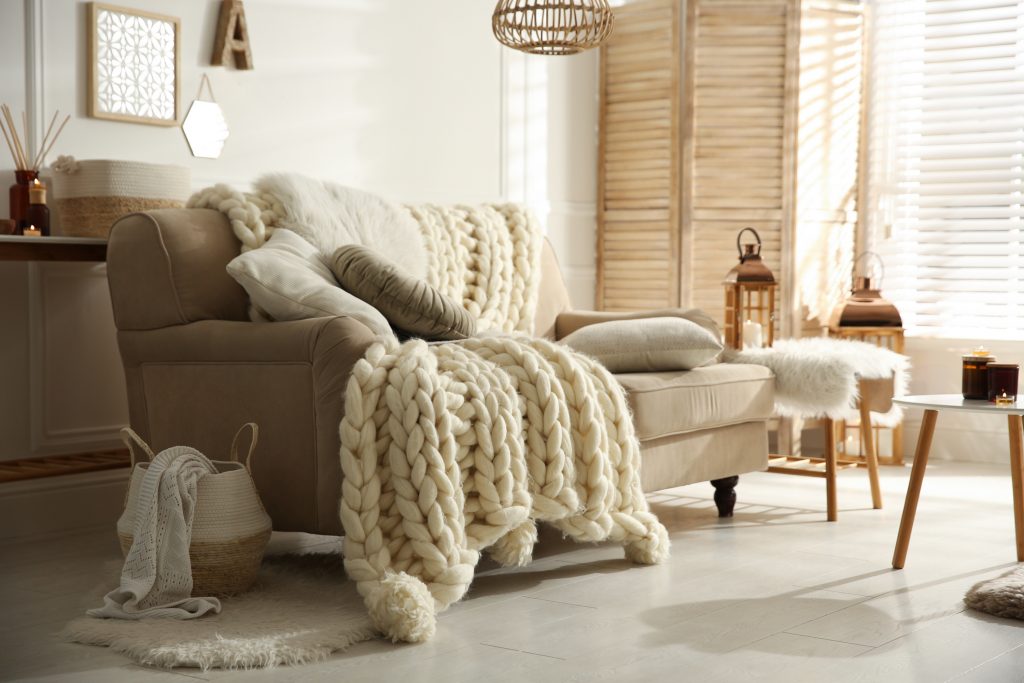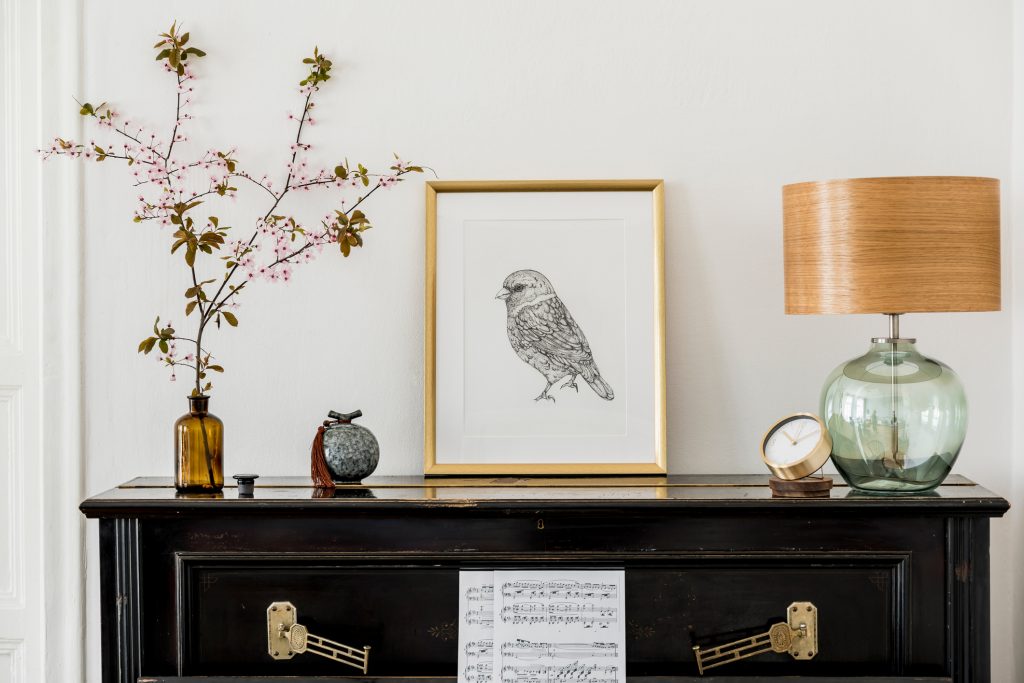 Decorating your home is more than aesthetics—it shapes how you feel, interact, and live in your space every day. Your decor impacts mood, functionality, and even how guests experience your home. But even with the best intentions, it’s easy to make mistakes that can throw off the look and feel of your space.
Decorating your home is more than aesthetics—it shapes how you feel, interact, and live in your space every day. Your decor impacts mood, functionality, and even how guests experience your home. But even with the best intentions, it’s easy to make mistakes that can throw off the look and feel of your space.
The good news? These common home decorating mistakes are easy to avoid when you know what to look for. If you’ve been looking at a room and thinking, something feels off, this guide is for you. We’ll explore five frequent errors homeowners make and share practical tips to create a home you love living in.
1. Overcrowding Your Space
One of the most common mistakes in decorating is overcrowding a room with too much furniture or decor. While it might feel tempting to fill every corner, it can end up making a space feel cramped and chaotic. Balance is key.
Why Overcrowding is a Problem
Trying to fit too much furniture and decor into one room can make your space feel claustrophobic and visually overwhelming. Plus, cluttered spaces are harder to clean and less functional overall.
Strategies for Decluttering and Organizing
- Adopt a “less is more” mindset: Focus on essential items that add value to the space.
- Follow the “one in, one out” rule: Introduce a new piece only if you remove an older one.
- Use smart storage solutions: Opt for furniture with built-in storage, like ottomans or bed frames with under-bed drawers. Create negative space: Not every corner or shelf needs to be adorned.
- Implement daily decluttering: Allocate 10–15 minutes a day to put items back where they belong.
2. Poor Lighting Choices
Lighting is more than just a practical necessity—it’s a powerful design tool that can dramatically enhance or detract from a room’s charm. Yet, many homeowners overlook its importance.
Why Poor Lighting is a Problem
Lighting is often an afterthought, yet it’s one of the most important elements in creating a welcoming and functional home. Relying on a single light source, ignoring natural light, and using overly harsh or dim lighting can drastically affect the mood and usability of a room.
Strategies for Improved Lighting
- Layer your lighting: Combine ambient lighting (overhead), task lighting (desk lamps, under-cabinet), and accent lighting (wall sconces, table lamps).
- Use dimmer switches: Install dimmer switches to control the lighting intensity and set the mood for different times of the day.
- Opt for LED bulbs: They’re energy-efficient and available in various color temperatures to suit your style.
- Embrace natural light: Opt for sheer curtains and strategically place mirrors to reflect light and enhance brightness.
3. Ignoring Scale and Proportion
Scale and proportion are critical elements that can make or break a room’s aesthetics. When items in your space feel too big, too small, or mismatched, the room loses its balance.
Why Scale is Crucial for Visual Harmony
A large sofa in a small living room dominates the space, while tiny decor pieces on a massive shelving unit can feel insignificant. Scale creates visual balance, ensuring all elements work harmoniously within the room.
Tips for Getting Scale Right
- Measure your room before buying furniture: Choose pieces that fit comfortably without overwhelming the space or leaving it feeling empty.
- Mix sizes thoughtfully: Combine furniture and decor in varying sizes to create dynamic, balanced spaces. For example, pair a big sectional sofa with a sleek, minimalist coffee table.
- Mind the ceiling height: Taller ceilings can accommodate taller furniture, while low-profile items work better in smaller rooms.
4. Neglecting Color Schemes
Color is one of the most defining aspects of any room—it sets the tone, influences the mood, and ties together all the elements in a space. However, many homeowners make the mistake of rushing into a color scheme without careful consideration.
How Color Impacts a Room’s Atmosphere
Colors affect how a room feels: neutral tones (beige, gray, white) create a calm and timeless atmosphere, warm colors (red, orange, yellow) add energy and vibrancy, and cool colors (blue, green, purple) evoke relaxation and serenity.
Choosing colors that clash with the room’s purpose or other elements can upset the vibe you’re aiming for. For instance, while red might energize a room, it might feel overwhelming in a bedroom meant for relaxation.
Tips for Selecting a Winning Color Scheme
- Start with the room’s purpose: Consider how you want to feel in the space. Is it a lively social area, or a private retreat?
- Pick a primary color and build around it: Use the 60-30-10 rule—60% for the primary color (walls/major furniture), 30% for a secondary color, and 10% for an accent color.
- Test paint samples: Paint a swatch on the wall and observe how it looks at different times of day under different lighting conditions.
A cohesive palette will instantly elevate your decor and make the room feel more harmonious.
 5. Lack of Personal Touch
5. Lack of Personal Touch
Your home should reflect your personality, yet many homeowners stick to generic decor that doesn’t feel unique or personal. This can make your space lack warmth or individuality. Your space might never feel like home if it doesn’t reflect your personality. Incorporating personal touches brings warmth and uniqueness to your decor.
Leveraging Accessories to Transform Spaces
Accessories are the finishing touch that gives your home personality and character. Pieces like throw pillows, rugs, artwork, and vases can inject color, texture, and personality into a space. They’re what make a house feel like a home.
Use Accessories to Infuse Personality into Your Home
- Use personal touches into your design: Display family photos or mementos from travels, or your own artwork.
- Balance your style with overall design: If you love bold patterns, use them sparingly in accents like a rug, cushions, or curtains while keeping the rest of the space simple and cohesive.
- Choose decor that tells your story: It could be as simple as a coffee table book on a topic you’re passionate about.
Create a Home You Love
Your home should reflect your taste, lifestyle, and personality—but it’s also essential to avoid common decorating missteps that could hinder your decor goals. Great decorating isn’t about filling a room with the most expensive pieces; it’s about making intentional choices that enhance the space and bring you joy. Take it one step at a time, and before you know it, you’ll have a home that feels like it was designed by a pro!
Build new with S&A Homes
S&A Homes offers a variety of new home communities and floorplans in the most sought-after locations in Central and South-Central Pennsylvania. To learn more about the available home designs and quick move-in homes, call 1-855-SAHOME1 or visit SAHomeBuilder.com.
